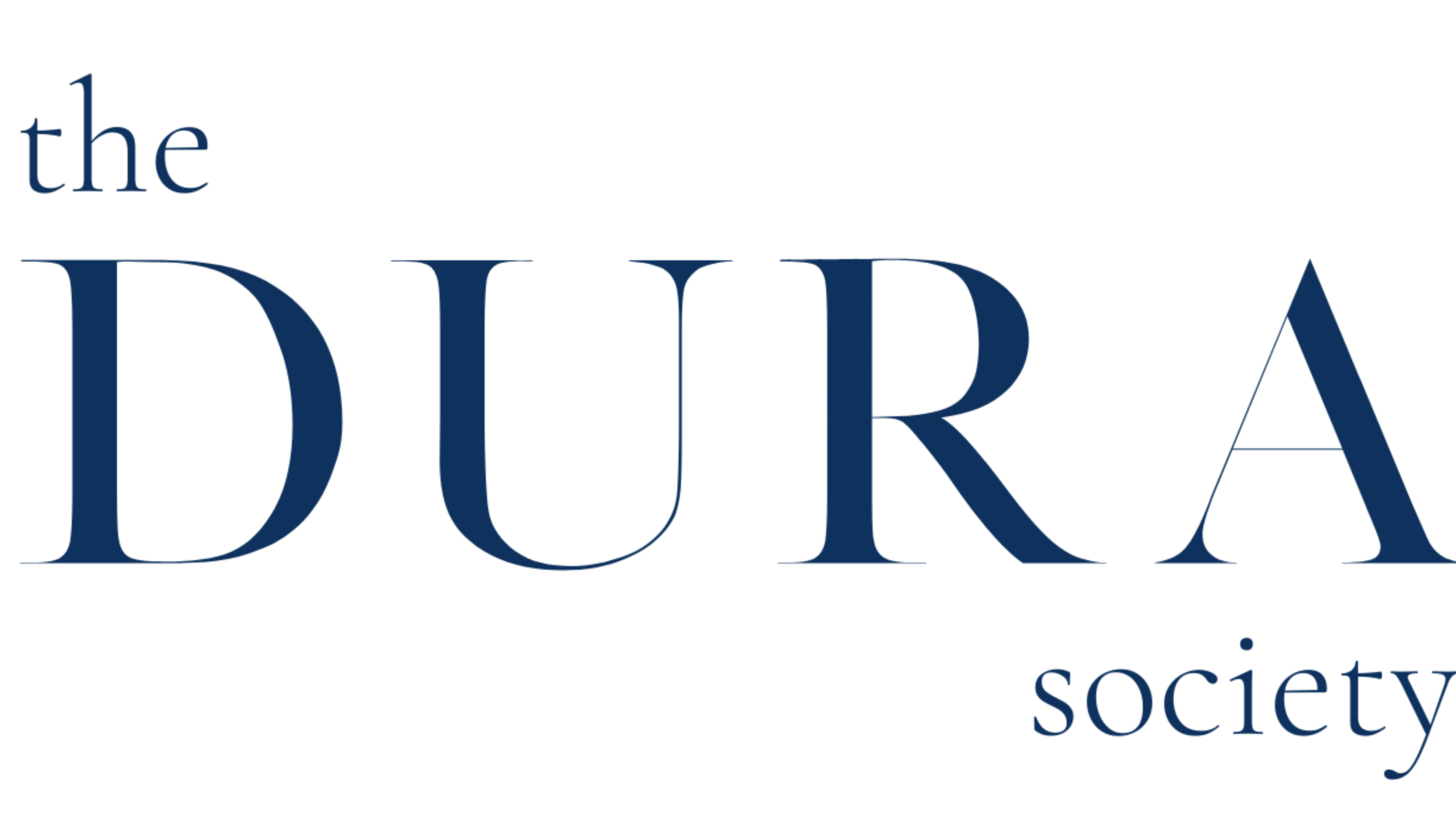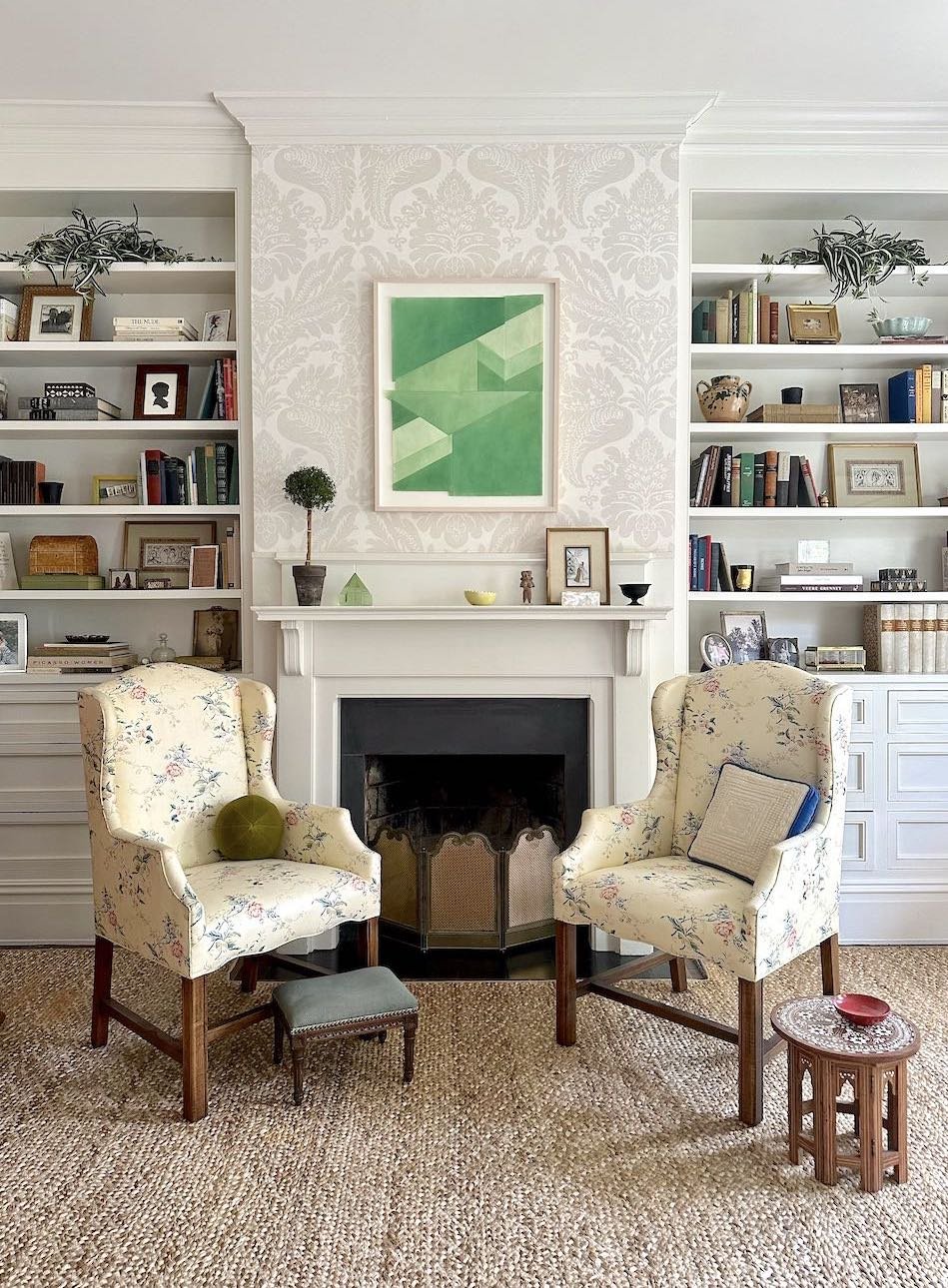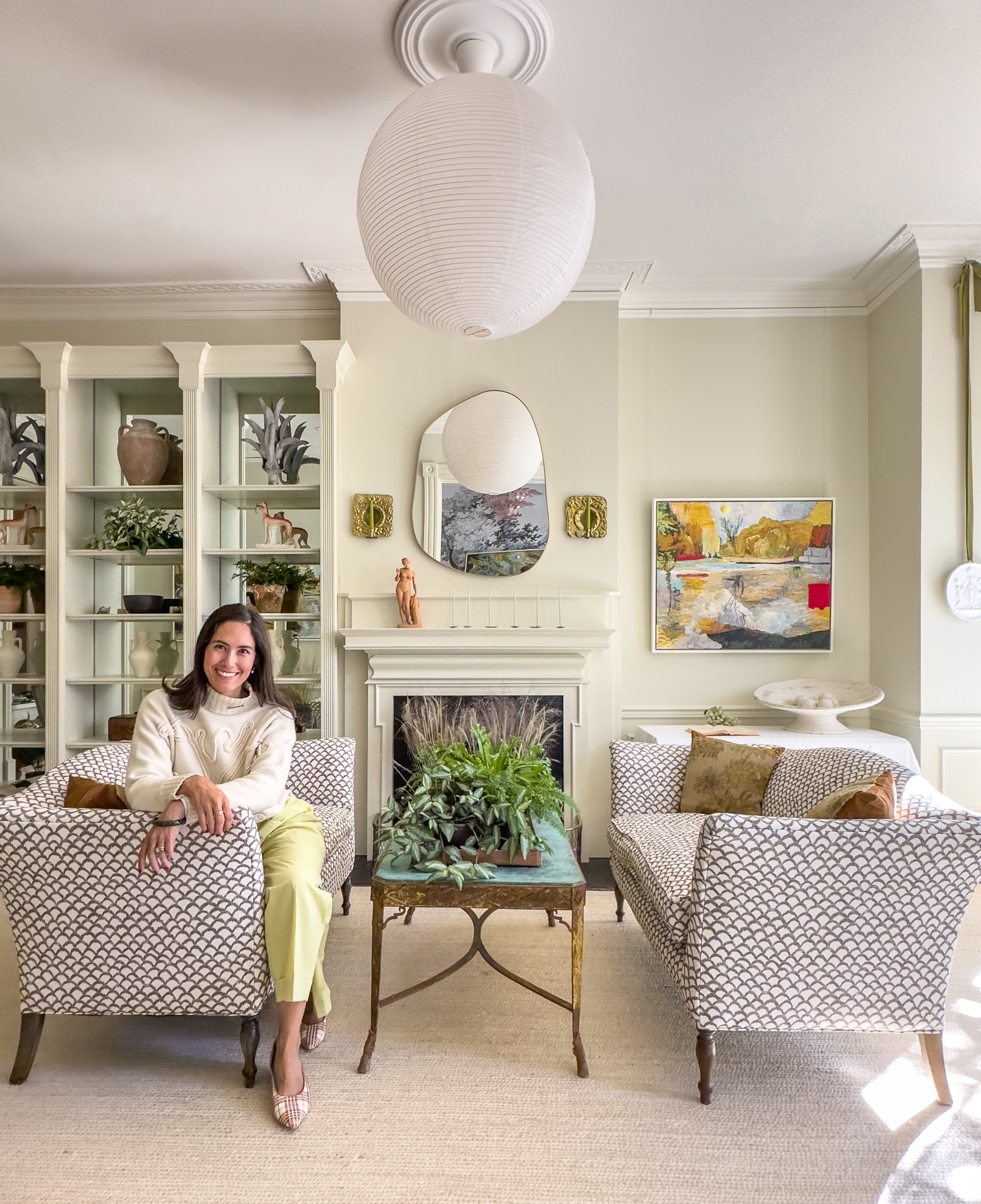Introducing Audra Kiewiet de Jonge, founder of Art/Artefact
meet Audra Kiewiet de Jonge, founder of art/artefact, the interior design practice with an art-first perspective built upon her years in the art world and formal training as a painter. audra’s work carries the hallmark of an eye attuned to the exceptional and unexpected with an approachability that feels fresh and unencumbered.
At the root of Audra’s work is the concept of value, and creating lived environments for the pieces that hold value in our life — whether a child’s finger painting or one by Cy Twombly. Previously Audra has held positions with Galería OMR in Mexico City, with Kate Brodsky of KRB in New York, and Maja Smith of Found by Maja in San Francisco.
“Art/artefact is an art-forward interior design practice founded by Audra Kiewiet de Jonge that places a collection at the heart of every project. Formally trained as a painter and an art historian, her historical perspective is informed by a modern sensibility– bringing art and objects into context and conversation with the way we live today.”
How did you get involved in this space, what's your training and background?
I studied painting, art history and psychology at university and worked for many years in the art world. I have always had a deep love of the built environment and my work with clients as an art advisor began to naturally incorporate the context around the pieces we would acquire to create for my clients a way to live with art that felt authentic to their individual lifestyles.
What was your first job in the art / interiors world?
My first job was as an intern at the Museum of Contemporary Art, Chicago in the development department where I wrote grant proposals and applications for the museum’s programming. I learnt a lot about institutional voice and positioning for opportunities, and the exercise really helped me to learn early on how to get in the headspace of a brand or identity and project that mission statement in new projects.
Describe the mission behind your art-first approach to interiors.
In my practice as an interior designer and art advisor, I help my clients build collections to live in, with a particular sensitivity to creating context that inspires who they are. Every truly great collection is a form of portraiture–it reflects the person behind it. My job is to translate that to the art, objects and interiors that make an inspiring home or corporate brand environment.
The thing that sets us apart as an interior design studio is that our approach centres on a great collection. Whether working with a client’s existing collection or building one together, the heart of the room is the art–the room is informed by the art instead of the last item sourced, as is so often the case. The art is the thing that you shouldn’t be able to imagine living without, that you take with you when you move or the sofa needs replacing, but it deserves a great room. To truly enjoy your surroundings you really need both – a great collection and a beautiful room.
What do clients look to achieve when working with you?
Each project and client motivation is different, but at the core is a desire to learn and to be inspired. They recognize that great rooms deserve great art and want to build an environment that has deeper meaning and connections to culture and our place in it. Clients really value my eye and experience with the art market and ability to connect them with incredible pieces and artists that resonate with their interests and passions.
What do you enjoy most about your work?
I love the curation and the creative process that comes with matching people to incredible pieces. Building a collection is like creating a portrait of an individual. I feel so lucky to get to spend my time discovering new artists and learning about my clients.
I studied painting and art history, and that way of seeing the world is inextricably linked to my work. Portraiture is an artform that fascinates me–how we present ourselves to the world, our aspirations, our individuality, and the coded symbolism of attributes, is so mysterious and delightful. In some ways, I am a portrait artist, shaping the world around me.
Can you tell us about any interesting projects you've worked on lately?
I was thrilled to finally unveil a major commission project for a corporate client, Opus One Winery, that was three years in the making and involved an international search for an artist whose work resonated with the brand’s ethos and our ideal guest experience. The commission involved five 10ft tall paintings by Brooklyn-based artist Rosalind Tallmadge that were made with her signature shaved stone, gold leaf and marble dust on sequin fabric. These panels fill five monumental niches in the rotunda–the first interior experience for guests. These niches stood empty for 30 years, and now with the art installed, you can’t imagine them any other way.
Tell us about your personal collection. What pieces can we find in your home?
My personal collection is very eclectic. Because I am constantly looking at art and acquiring pieces for others, most of my personal acquisitions are not planned, just moments when I see something I connect with and can’t imagine living without.
I take a very high-low approach to my personal collection, and I encourage clients to do this, too. Valuable works by Donald Judd sit next to relatively unknown painters, vernacular photographs, and contemporary collage works. I’ve honed my sense of what moves me over a lifetime of looking, and so I really trust my gut reaction when I’m buying a work.
I love to help my clients develop their taste muscle, and I coach them on what I’m seeing and the connections I find in it to art history, contemporary culture, the emotional charge, etc.
What advice would you give to someone starting an art collection?
The place I always start is with building a profile of what your core interests are – what have you always gravitated toward and get lost in? You want to hold those things close to your heart and engage them through collecting.
The true joy in collecting is the opportunity to learn and be filled with wonder and inquisitiveness again. It is a process of discovery that we lose connection with as adults. For example, I have always loved being in nature and the natural world. Many pieces in our collection reflect that feeling back to me, although you might not make the connection at first glance.
I like a lot of hard geometric minimalist art, but so much of the patterns underpinning those structures are drawn from nature. Ellsworth Kelly’s body of work, for example, is so bold and minimalist. Solid blocks of color that are so invigorating, sometimes like summer sunlight through a leaf. He also drew plants. He said that “drawing plants was a way into his paintings and sculptures.” I love seeing that in his work.
What trends are you seeing in the art market at the moment?
I am very interested in the return to an interest in figuration and portraiture as well as the very innovative things happening in textile art. I have my eye on food as sculpture right now, as I think it speaks volumes to where we are as a society that recognizes how we have been robbed of being present in the moment by social media coupled with an acute, self-critical awareness of our own consumption and need for novelty.
WEALTH
Describe your relationship with money and personal finance in three words?
If I’m honest, my relationship with money comes from a place I would describe as limited by uncertainty. I’d like to feel empowered by choice. I am working toward this.
How do you define wealth?
Just as so many words in the efficient English language, we have only one word to symbolize a multitude of meanings. I think there are many kinds of wealth, but the one that is the primary association for me is to have financial freedom to choose for a reason other than monetary cost. Other forms of wealth that are very important to me are wealth of gratitude and of personal community.
What money lessons did you learn when growing up? What would you have done differently?
My dad is a very frugal person, it's just who he is–very practical, very future-oriented, and he held the purse strings in our family. I did not feel like my mother had the freedom of financial choice or independence. I grew up wanting that for myself, and it is something that I am still evolving toward. He taught me a lot about weighing decisions and delaying gratification and how to make the most of a limited budget. I am deeply appreciative of the creativity and resourcefulness that his strict rules about spending led me to, but I am still trying to figure out for myself what is balance and when it is appropriate to splurge and about financial independence as a woman.
What has been the most helpful tool for you to learn about money?
A financial planner. I find I need someone else to help me with my finances and to give me informed options to choose between.
How do you organise and manage your own finances?
I have a general idea of what is within my big picture budget and I mostly stay within that lane. My husband and I are fairly good at saving, but that is because we don't really think about what we have on a day-to-day basis. We essentially siphon off a lot of our income into savings without it ever being present in our family expense checking account. It is almost like we aren’t aware it exists. It is a very fortunate place to be.
Do you invest? If so, in what?
Our investments are primarily diversified in the stock market. I’d like to start exploring adding some more real estate to that portfolio. I don’t collect art as an investment portfolio, although a number of key pieces in our collection have increased in market value. I don’t advise clients to collect for this purpose. When clients are looking to establish a baseline value of art property to loan against, I liaise with their financial institution to verify what collateral they are looking for and I then offer insights and help to make acquisition decisions, but these cannot be guaranteed to continue to grow in value due to fluctuations in the market. It’s not a meaningful way to collect, and coming back to freedom of choice, being able to collect what moves you is so much more enriching and full of wealth than stocking a collateral portfolio of blue chip art that doesn’t speak to you at all.
What is the best money decision you have made?
Still waiting for it!
What is your number one financial priority?
I feel like my husband and I are in a phase of wealth where preserving freedom of choice is our priority for our family, and teaching earned value is important to our values. I want my girls to understand the value of what they have and the importance of contributing your own work to a sense of ownership and purpose in life. The value of anything that is free is just that–worthless.
How often do you talk about money with your friends?
I grew up with the understanding that you don’t talk about money. I honestly don’t know how to change that in a healthy and positive way. But I do see the value in demystifying and removing the taboo.
I don't generally talk about it, at least not candidly. I suppose, having lived in New York and many of my friends are also from there, we do share a perverse fascination with real estate and are very transparent about price. Those conversations are liberating; to objectively discuss what things cost and what we are willing to pay.
In some instances in my career I had some quiet conversations about compensation, but many employers in the US restricted those conversations, adding to the sense of it being wrong to talk about it. I think the conversation is evolving slowly.
Which area of finance do you wish you knew more about, and why?
I’m sure I could benefit from knowing more about all of it. I don’t think it was ever presented in a way that was interesting and engaging to me. I’d love to see the way it is taught and introduced change to engage a wider audience of people, specifically women.
WELLNESS
What is your morning routine?
Coffee.
Hugging my girls good morning.
Make the bed.
I’m a low maintenance person - it's really all about trying to wake up a few minutes before my girls so that I can have that quiet time with my cup before starting the day.
What is the most important life lesson you have learnt?
I have learnt through trial and error to believe in my own abilities and vision. I would also say trusting your gut and allowing yourself to make some decisions on instinct even when rational thought doesn’t agree.
From a wealth and business perspective, I think the most important lesson I have learnt as an entrepreneur is never to compromise on my value to get business. A client that is going to be a great collaborator and worth my expertise and best work product is going to see my value and not diminish it. In experience, these are the best clients to work with, and the ones that are unwilling to pay for value are the hardest to please.
Do you have a mentor or inspirational figure that has guided or influenced you?
I find so much to admire from so many people that I’ve had the privilege to work with as well as those whom I admire from afar or from history. I see inspiration all around me. I find support and guidance from my strong relationships and friends.
What is a book that has influenced your life?
So many! The poetry of Seamus Heaney moved me so deeply since I was a teenager. So much so that I named my late dog after him. All the books I consumed for my first Art History course, Art Since 1945.
In Praise of Shadows, by Junichiro Tanizaki, is a treatise on Japanese aesthetics, and it comes from a perspective that is in opposition to how the West designs everything for the light. I always want to see things from another point of view, to fully understand what it is that I am experiencing and this slim book shows you the merits of celebrating darkness and shadow in place of shining light.
From the forward by Charles Moore, School of Architecture, UCLA:
“In the West our most powerful ally is light. ‘The sun never knew how wonderful it was,’ said architect Louis Kahn, ‘until it fell on the wall of a building.’...It comes comes with the thrill of a slap for us then to hear praise of shadows and darkness; so it is when there comes to us the excitement of realizing that musicians everywhere make their sounds to capture silence or that architects develop complex shapes just to envelop empty space…It could change our lives.”
What’s next for you?
In addition to several ongoing client projects, I am currently collaborating with a Mexico City-based artist on an edible sculpture project for a charity event. I am also helping the magazine Veranda with a special issue due out in July/August focusing on Mexico. I am writing a guide to Mexico City art world discoveries, where I lived for two years after university and worked at Galería OMR in Roma Norte.
What are you currently reading and listening to?
I am currently reading the memoir of Françoise Gilot, My Life with Picasso, and a collection of poems by Mary Oliver.







